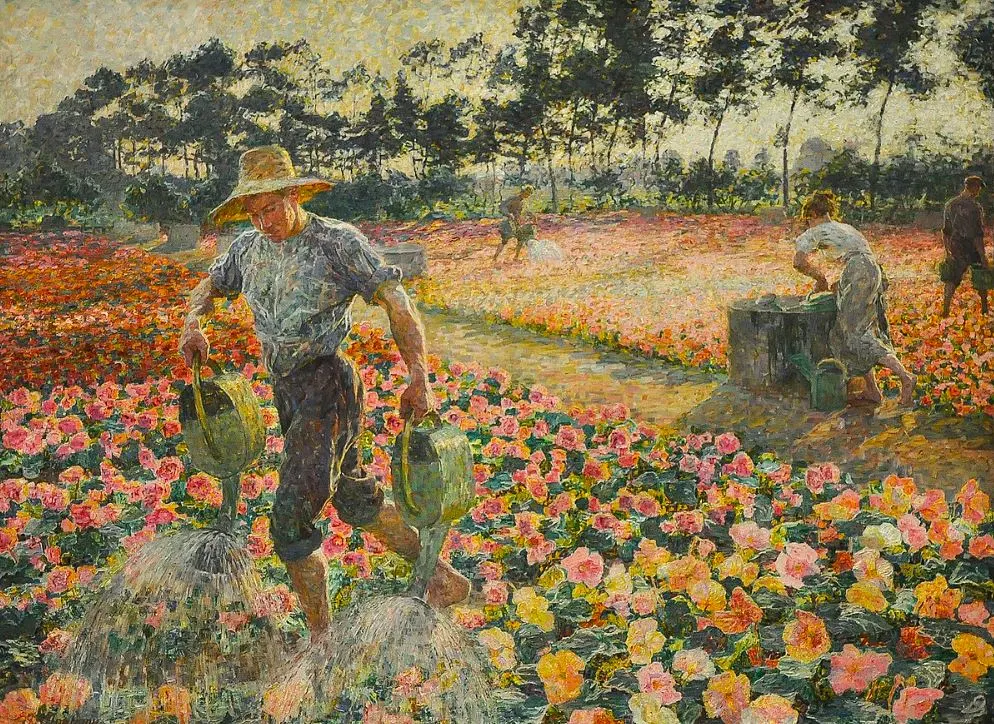Ghent is a city in Belgium that is often referred to as the Manhatten of the Middle Ages.
That’s because it’s home to some of the most stunning landmarks built during this period in architectural history.
It’s also in Ghent that you can find the Ghent Altarpiece, the incredible masterpiece by the van Eyck brothers which was completed in the early 15th century.
If you want to enjoy more fine art then there’s hardly a better place than at the Museum of Fine Arts, Ghent, locally known as the “Museum voor Schone Kunsten” or “MSK.”
Apart from being able to explore 600 years of art, you can also watch the live action of the restoration of the Ghent Altarpiece until it’s completed in 2026.
It’s the oldest museum in Belgium (founded in 1798) and the collection of over 15,000 artworks is housed in a building that was completed in 1900.
In this article, you’ll discover some of the highlights of the painting collection at the MSK
1. Christ Carrying the Cross – Hieronymus Bosch
- Date created: 1482
- Dimensions: 77 × 59 centimeters (30 × 23 inches)
Christ Carrying the Cross is an intriguing painting that was originally assigned to the final years of the career of Hieronymus Bosch (1450-1516). This claim has now been disputed and it’s likely that it was painted by a follower of the Dutch artist somewhen between 1510 and 1535.
Despite the fact that it was likely not by the hand of the eccentric artist, it bears the same grotesque characteristics he often used in his heaven and hellscapes. Christ carrying the Cross among a large number of peculiar figures is a remarkable work of art in the oeuvre of the MSK in Ghent.
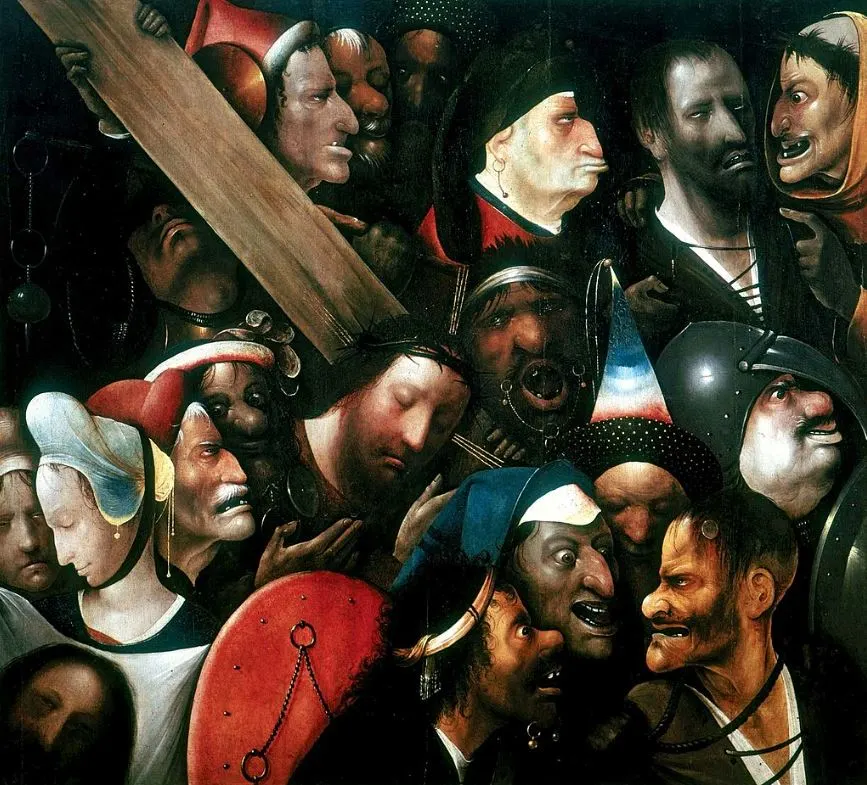
2. Man of Sorrows – Maarten van Heemskerck
- Date created: 1532
- Dimensions: 84.2 × 72.5 centimeters (33.1 × 28.5 inches)

Man of Sorrows is the title of a painting by another Dutch artist named Maarten van Heemskerck (1498-1574), a man who spent most of his career in Haarlem. It depicts Jesus Christ wearing a crown of thorns which is being removed by angels shortly after his crucifixion.
This isn’t a typical crucifixion painting but the Man of Sorrows, as described in the Bible in the Book of Isaiah, was still a popular subject in religious art history. It’s one of at least 5 different versions of the Man of Sorrows that the Dutch religious artist painted in his career.
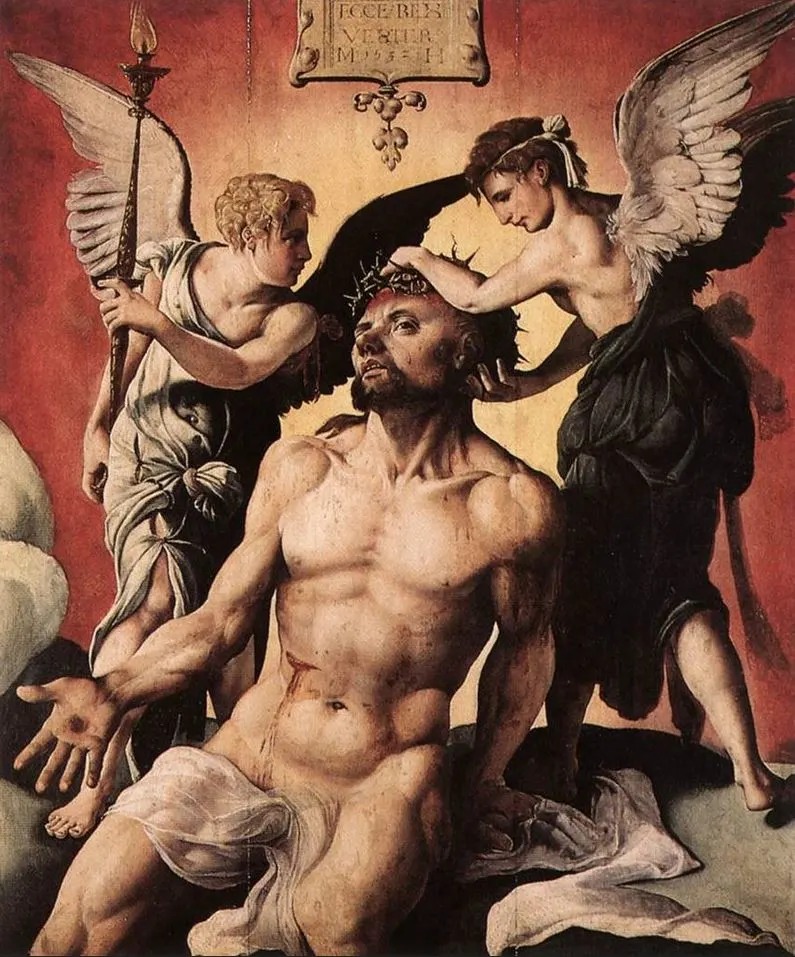
3. Portrait of Giovanni Paolo Cornaro – Tintoretto
- Date created: 1561
- Dimensions: 102 x 81 centimeters (40.1 x 31.8 in)
Portrait of Giovanni Paolo Cornaro is a beautiful portrait painted by Tintoretto (1518-1594), the nickname of a Venetian painter named Jacopo Robusti. It depicts a member of the prominent Cornaro family in Venice in the 16th century.
The man was an expert in art and architecture and the Mannerist artist added architectural details and part of a sculpture to convey this notion to the viewer. The dark background was a typical feature of 16th-century Venetian portrait painting.
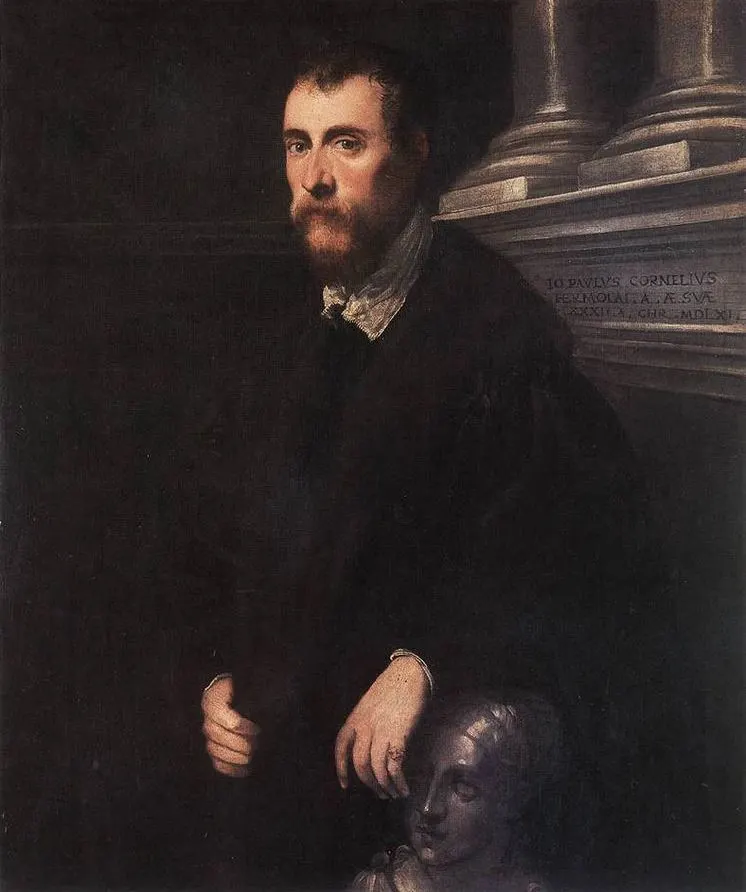
4. Wedding Dance in the Open Air – Pieter Brueghel the Younger
- Date created: 1614
- Dimensions: 43.9 x 59.1 centimeters (17.2 x 23.2 inches)
Wedding Dance in the Open Air is the title of a relatively small painting by Pieter Brueghel the Younger (1564-1638), the son of Pieter Bruegel the Elder. He mainly focused on copying the most popular works of his father which often included typical Flemish festivities in the 16th century.
Whether or not this painting is an exact copy of one of his father’s artworks or a compilation of several paintings, including for example “The Wedding Dance,” remains unknown. What’s remarkable about this work is that the bride also can be seen dancing, as opposed to Bruegel’s original masterpiece “The Peasant Wedding.”
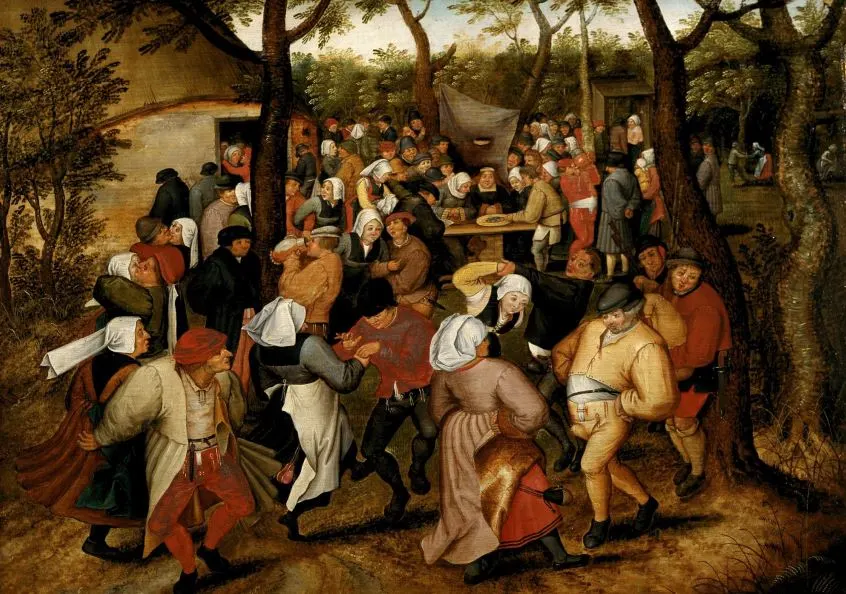
5. Jupiter and Antiope – Antony van Dyck
- Date created: 1620
- Dimensions: 150 × 206 centimeters (59 × 81 inches)
Jupiter and Antiope is the title of a large painting by Antony van Dyck (1599-1641), the Flemish painter who became a successful artist in Italy, his native Antwerp, and England. He even became the official court painter and knight in England during the Baroque era.
This painting depicts a scene derived from Ovid’s Metamorphoses in which Jupiter disguises himself as a satyr in order to grab the beautiful nymph Antiope and impregnate her. The painting at the MSK is one of two similar works by van Dyck, the other can be admired at the Wallraf-Richartz Museum in Cologne, Germany.
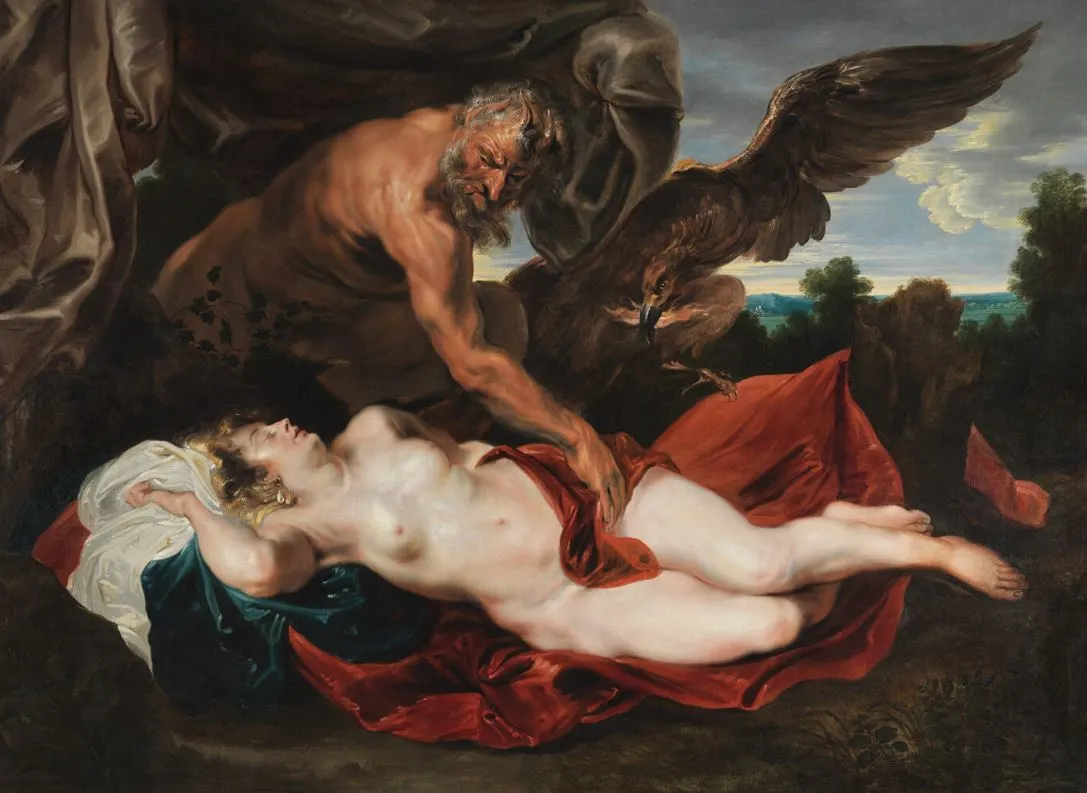
6. Family Portrait – Cornelis de Vos
- Date created: 1630-1635
- Dimensions: 144.5 x 203.5 cm (56.8 x 80.1 inches)
Family Portrait is the title of one of the most famous paintings by Cornelis de Vos (1584-1651), a Flemish painter and draughtsman who was one of the leading artists in Antwerp in the first half of the 17th century.
The title of the painting is pretty straightforward as it depicts the artist’s family. This family portrait is the epitome of an oeuvre that features a large number of intimate portraits, especially of children.
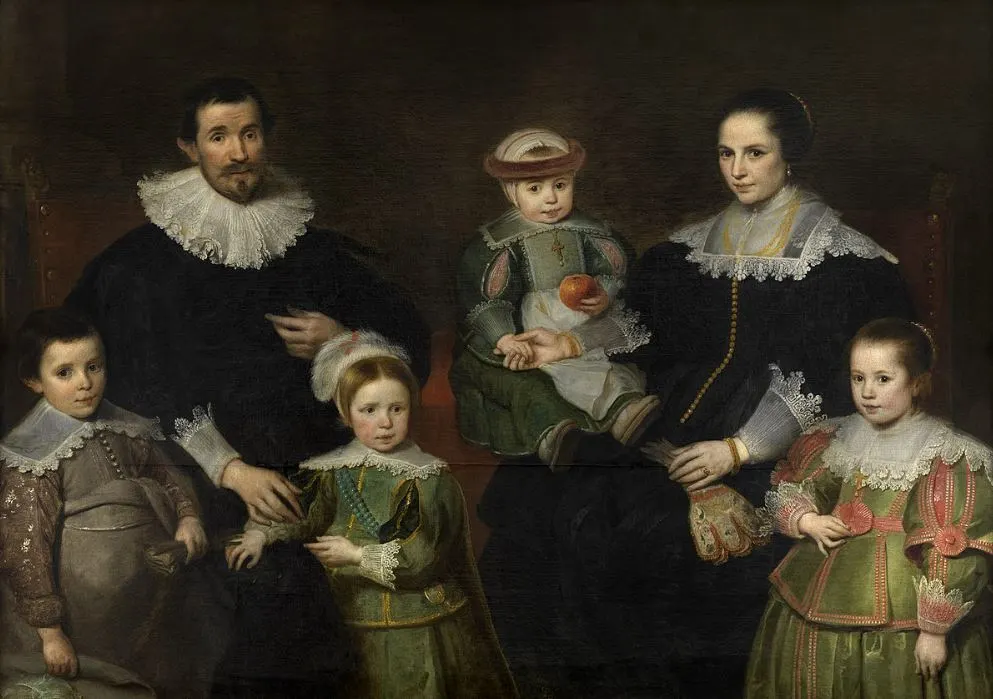
7. Saint Francis Receiving the Stigmata – Peter Paul Rubens
- Date created: 1633
- Dimensions: 265.5 x 193 centimeters (104.5 x 75.9 inches)
Saint Francis Receiving the Stigmata is a large painting by Peter Paul Rubens (1577-1640), arguably the most famous Flemish artist in history. Even though he lived and worked in Antwerp for most of his career, this work was commissioned by the Franciscan monastic church in Ghent.
This wasn’t the only painting he completed for the church as the church probably involved 2 other major paintings as well. As the title explains, it depicts the moment that Saint Francis receives the stigmata, sounds reflecting those of Jesus during his crucifixion, on his hands
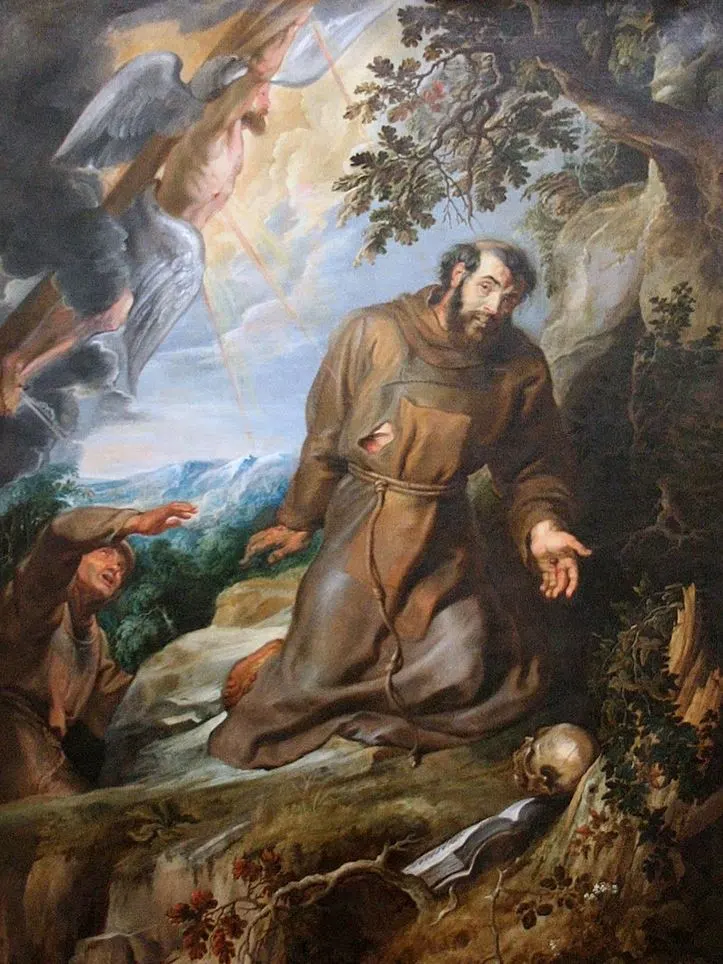
8. Allegory of the Five Senses – Theodoor Rombouts
- Date created: the 17th century
- Dimensions: 207 x 288 centimeters (81.4 x 113.3 inches)
Allegory of the Five Senses is the title of a painting by Theodoor Rombouts (1597-1637), yet another Flemish painter who made a name for himself in the early 17th century. It depicts a typical jolly bunch that became the trademark of his career.
Rombouts is considered to be one of the most renowned of all Flemish Caravaggisti. Just like their Dutch counterparts, these were artists who were heavily influenced by the paintings of Caravaggio (1571-1610), the Italian painter who took the use of chiaroscuro to another level.
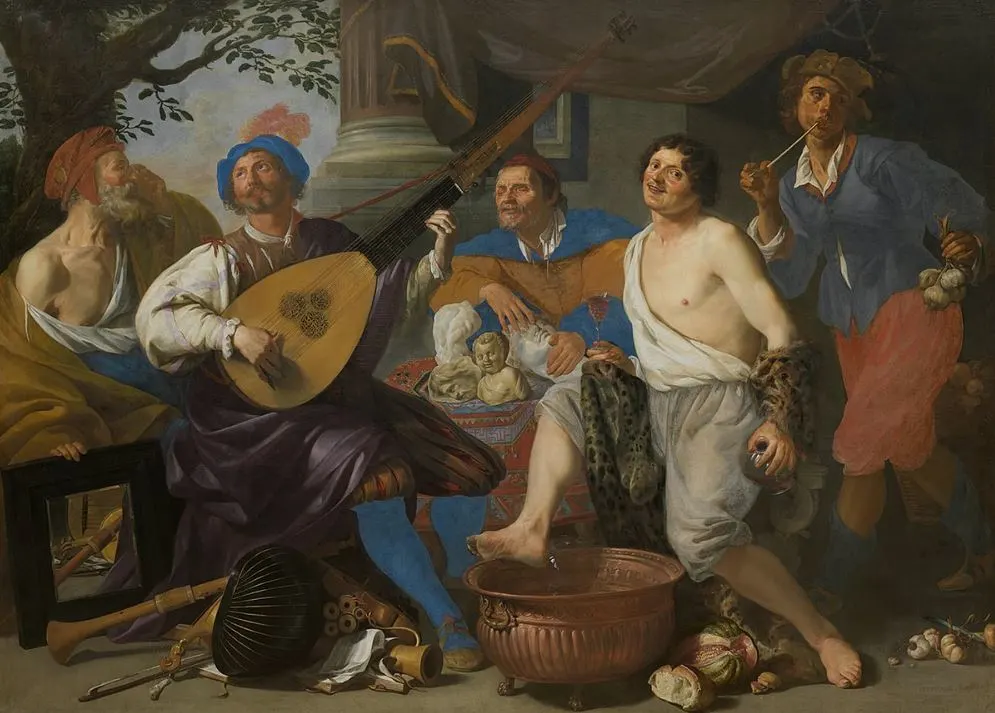
9. Old Lady with Masks – James Ensor
- Date created: 1889
- Dimensions: 55 x 46.6 centimeters (21.6 x 18.3 inches)
Old Lady with Masks is the title of a peculiar painting by James Ensor (1860-1949), a Belgian painter who completed one of the most famous Belgian works of art in history. And yes, this work was completed just a year after he completed his world-famous “Christ’s Entry Into Brussels in 1889” (1888).
What’s remarkable about this painting is that it was originally intended to be a portrait of a Dutch poetess named Neel Doff. When she refused the portrait, Ensor transformed it into a work that features several masked figures, a recurring subject throughout his career.
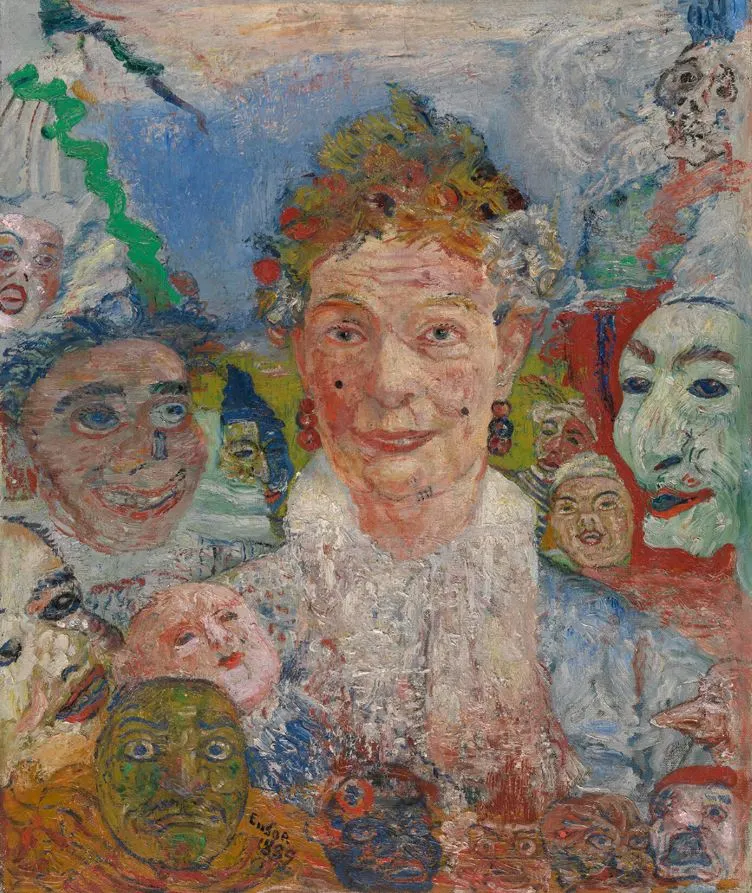
10. The Gardener – Jenny Montigny
- Date created: 1913
- Dimensions: 180 x 245 centimeters (70.8 x 96.4 inches)
The Gardener is a beautiful Impressionist painting by Jenny Montigny (1875-1937) that is also known as “The Begonias,” a reference to the depicted flowers. Montigny was another famous Belgian artist of the late 19th and early 20th centuries.
This work is a large painting that highlights the incredible talent that Montigny was blessed with. She managed to depict rural life in such a way that it appears to be incredibly pleasant, a striking difference from the Realism paintings of the same subject completed several decades earlier.
